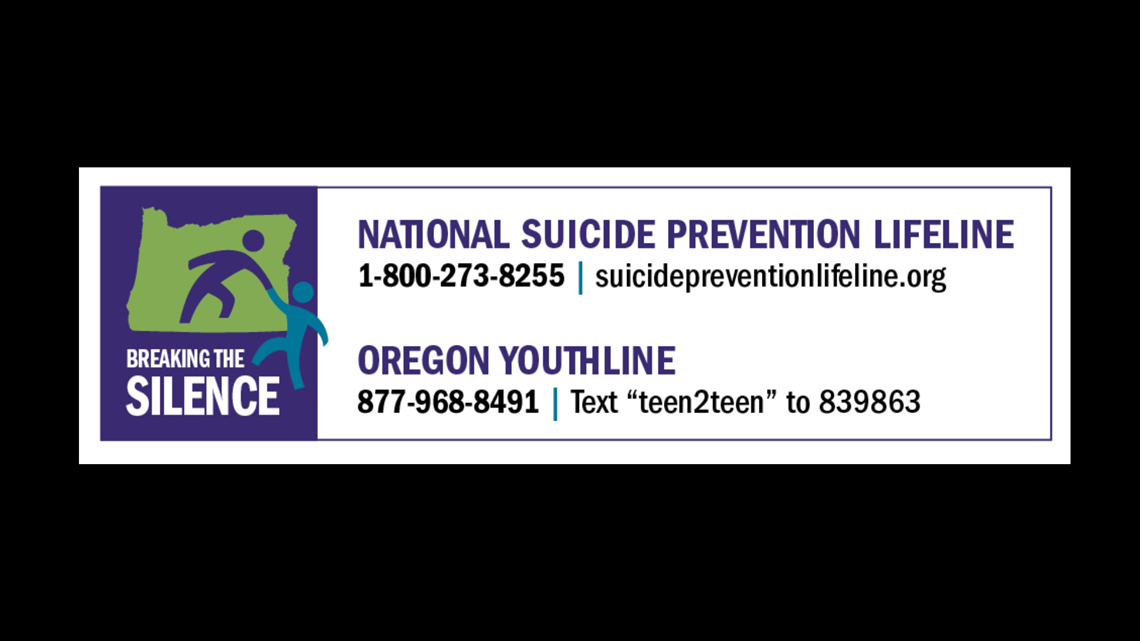Editor’s note: This month, newsrooms across the state are highlighting the public health crisis of death by suicide. Our goal of “Breaking the Silence” is to not only put a spotlight on a problem that claimed the lives of more than 800 Oregonians last year, but also examine research into how prevention can and does work and offer our readers, listeners and viewers resources to help if they – or those they know – are in crisis.
Most of our work will be published and broadcast April 7-14. The participating media outlets are using a common set of data and have loosely coordinated their coverage in an effort to avoid duplication and better amplify all of our work. When possible, we will promote each other’s stories, but all of them can be found on breakingthesilenceor.com
Sheila Hamilton is Portland author and past radio personality who now hosts a weekly podcast at www.BeyondWellWithSheilaHamilton.com.
In the days after my late husband’s suicide, when I struggled to breathe properly or imagine a path forward for myself and my 9-year-old daughter, I began posting yellow sticky notes in places I couldn’t avoid.
On my bathroom cabinet. While brushing my teeth, bleary-eyed and sobbing, I’d read my scribble:
“Look to the living, love them and hold on” -- clinical psychologist Kay Redfield Jamison
I’d reach for coffee beans in the morning, overwhelmed by a to-do list that no one wants. Casket or cremation? Call the IRS. Cancel his phone line. The note on the canister reminded me to rise above:
“What do you plan to do with your one wild and precious life?”-- poet Mary Oliver.
Sitting down to finally write the eulogy for the man with the electric blue eyes, the thinker who excused himself at parties and settled in a corner chair with a book.
“There is a solemn choice in life. Life and death; light and darkness; truth and lies are set before us. At every instant, the cry comes for us to choose one or the other and the choice of one involves the putting away of the other. And we must choose. That is one of the certainties of life.” – writer Stopford A. Brooke
Eventually, the sticky notes dried up. The questions and suggestions fell into the sink or on the floor, gathering with the dust and chaos suicide leaves for others. But, the choice inherent in those messages stuck with me. Life or death.
With suicide, media coverage almost always focuses on sensational acts committed by a celebrity, rock musician or movie star. Meanwhile, for every completed suicide, there are 25 people who attempt suicide and survive, according to the Centers for Disease Control and Prevention.
The vast majority of these survivors go on to accept help and find meaning. The media should pay less attention to the details of the suicide, and provide more resources for help. Coverage should include the wisdom of people who have been severely depressed or suicidal and recovered. These are stories of transformation, and they speak to a renewed appreciation of being alive.
My late husband loved his work as a designer and builder. He loved books so much they spilled over bookcases and bedsides. He made fires on rainy Sunday mornings and practiced wrapping our infant daughter like a burrito, his big hands going through the motion again and again. As if with this child, this living reflection, he was finally going to get something right.
But he likely had been suffering from depression and anxiety most of his life. Instead of asking for help, he pushed his dark thoughts and suffering to a place of shame and denial. He refused to be seen as suffering from a brain illness.
After two suicide attempts, he was finally diagnosed with bipolar disorder. I’m still not certain that was the right diagnosis. A better diagnosis is that he gave up on living.
In the weeks before his suicide, he was hospitalized in a windowless room that looked a lot like “One Flew Over the Cuckoo’s Nest.” Nurses worked behind thick bulletproof glass. A doctor he rarely saw prescribed as many as 13 drugs. Counselors advised him to quit his job and forever change his life to accommodate his mental illness.
We sat each night on stiff couches as other patients shuffled around. When he asked for something to do, the nurses offered him crayons. He described his ordeal like a person whose imagination had been wiped clean. My hope simply didn’t help.
“We’ll get through this.” I offered, panic stricken. “One day at a time.” I didn’t realize the mind of suicidal ideation is a circular track with no on or off ramps. His hands moved listlessly. His eyes were flat.
Imagine if we’d met with other people who suffer from suicidal ideation, but who keep their careers and their children. Imagine if we’d been offered hope instead of a dim view of the future. This isn’t the obligation of the press, but if we truly want to change the growing suicide rate, our stories, our narrative of suicide must change.
A couple of years ago, I spoke at a high school in Washington where there had been a cluster of suicides. The school’s position was no memorials, no mention of the loss of several classmates. But, when I asked the students if they were aware of the tragedies, every hand went up. They didn’t need more details of the deaths. They needed more details about where to get help. And how to live with anxiety and depression.
Choosing life doesn’t mean living without pain and suffering. That’s all part of the deal. But, my husband’s choice to move away from his pain toward the unknown paradoxically changed me for the better.
Through profound grief, I discovered gratitude. Through vulnerability, I’ve found strength. Suffering isn’t brave, but it’s part of the agreement we make in return for being human. I climbed out of the cave of grief and moved toward love and what I can count on.
This breath. This moment. Life.
RESOURCES


The National Suicide Prevention Lifeline can be reached at 800-273-8255. The Crisis Text Line provides free, 24/7 crisis support by text. Text 741741 to be connected to a trained counselor.
Help is available for community members struggling from a mental health crisis or suicidal thoughts. Suicide is preventable.
The Multnomah County Mental Health Call Center is available 24 hours a day at 503-988-4888.
If you or someone you know needs help with suicidal thoughts or is otherwise in an immediate mental health crisis, please visit Cascadia or call 503-963-2575. Cascadia Behavioral Healthcare has an urgent walk-in clinic, open from 7 a.m. to 10:30 p.m., 7 days a week. Payment is not necessary.
Information about the Portland Police Bureau's Behavioral Health Unit (BHU) and additional resources can be found by visiting http://portlandoregon.gov/police/bhu



